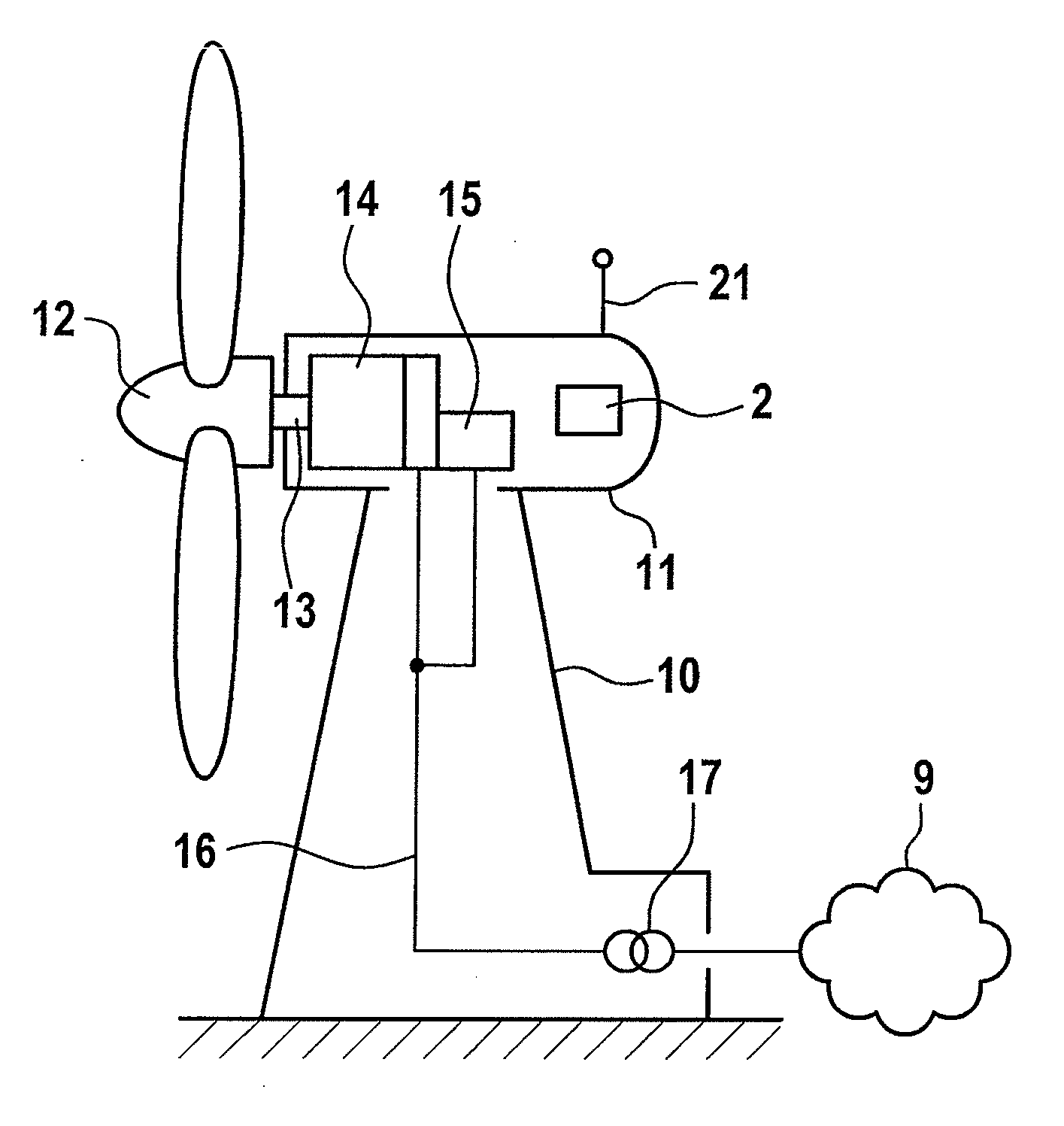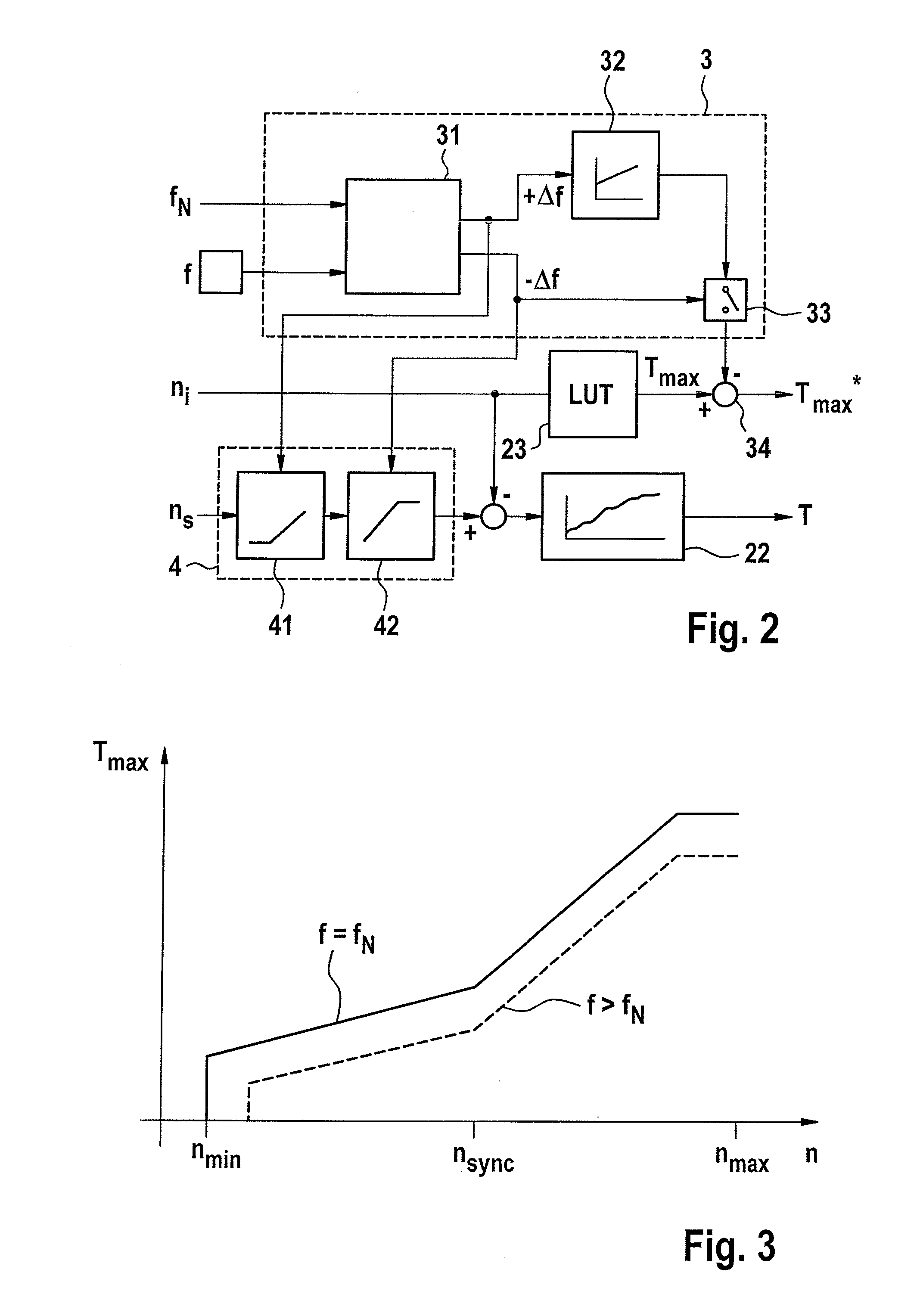Wind energy installation with variable rotation speed characteristic
a technology of wind energy installation and rotation speed, which is applied in the direction of electric generator control, machine/engine, greenhouse gas reduction, etc., can solve the problems of planned overengineering of components, high cost, and risk of overloading and damage to components of wind energy installation, so as to prevent the maximum torque from being raised, no yield loss, and the effect of modifying the rotation speed
- Summary
- Abstract
- Description
- Claims
- Application Information
AI Technical Summary
Benefits of technology
Problems solved by technology
Method used
Image
Examples
Embodiment Construction
[0025]The wind energy installation has a tower 10 at whose upper end a pod 11 is arranged such that it can swivel in the azimuth direction. A wind rotor 12 is arranged, such that it can rotate, on an end face of the pod 11 and, via a rotor shaft 13, drives a generator which is designed to convert mechanical energy to electrical energy. In the illustrated exemplary embodiment, this is a doubly-fed asynchronous generator 14, which interacts with a converter 15. The electrical power produced by the generator 14 with the converter 15 is emitted via a connecting line 16 to a transformer 17, which is arranged at the foot of the tower 10 of the wind energy installation. This is connected to a distribution grid 9, which may be an internal grid for a wind farm, or a public power transmission grid.
[0026]Furthermore, a controller 2 is arranged on the pod 11, is connected via signal lines (not illustrated) to the various components of the wind energy installation, and controls them. In turn, co...
PUM
 Login to View More
Login to View More Abstract
Description
Claims
Application Information
 Login to View More
Login to View More - R&D
- Intellectual Property
- Life Sciences
- Materials
- Tech Scout
- Unparalleled Data Quality
- Higher Quality Content
- 60% Fewer Hallucinations
Browse by: Latest US Patents, China's latest patents, Technical Efficacy Thesaurus, Application Domain, Technology Topic, Popular Technical Reports.
© 2025 PatSnap. All rights reserved.Legal|Privacy policy|Modern Slavery Act Transparency Statement|Sitemap|About US| Contact US: help@patsnap.com



